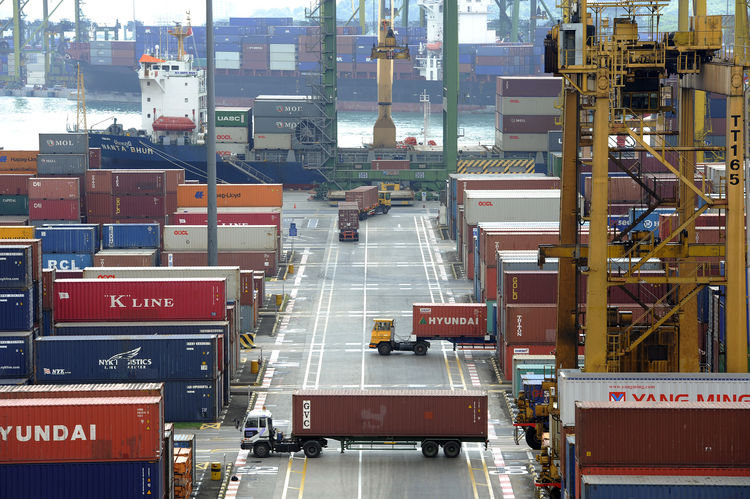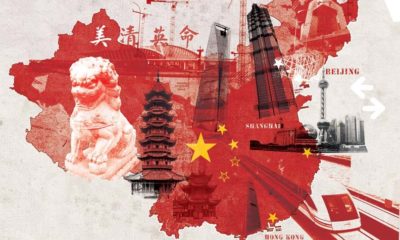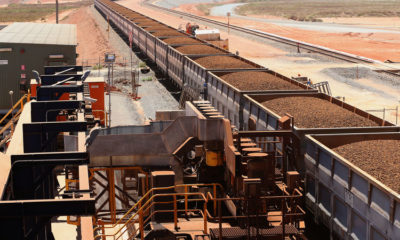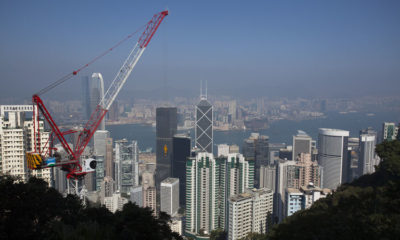- China Exports Snap Losing Streak on Weaker Yuan
Chinese exports beat expectations in November, a positive sign for the global economy, but analysts warned Thursday of an uncertain outlook as US President-elect Donald Trump prepares to take office, with Beijing’s trade policy in his sights.
The advance broke a seven-month losing streak and marks a sharp turnaround from the previous month helped by a plunging yuan, which made the country’s goods cheaper for overseas buyers.
Imports also beat forecasts, suggesting the world’s number two economy continues to stabilise after years of slowing growth and providing some welcome news for the country’s leaders.
Exports increased 0.1 percent year-on-year to $196.8 billion, beating a Bloomberg News survey of economists predicting a median five percent drop.
Rising commodity prices also lifted imports 6.7 percent to $152.2 billion, compared with expectations of a 1.9 percent fall. The trade surplus slipped to $44.6 billion in the month.
China is the world’s biggest trader in goods, and its performance affects partners from Australia to Zambia, which have been battered as its expansion has slowed to levels not seen in a quarter of a century.
However, it has suffered years of slowing growth and last year expanded at its weakest rate in a quarter of a century.
The readings were a massive improvement on the previous month, when exports dived 7.3 percent and imports fell 1.4 percent.
Stable overseas demand and a weaker Chinese currency helped, with the yuan sliding against the dollar to eight-year lows in recent weeks.
But analysts with ANZ warned that the “upside surprise” in exports reflected a delay in shipments from the previous two months.
“Despite today’s positive surprise, the medium-term outlook for Chinese trade remains challenging,” said Julian Evans-Pritchard of Capital Economics in a note.
– Trump fear –
A broadly sluggish outlook for global growth will weigh on exports, he said, while the cooling of China’s red-hot property market will suppress demand for imported commodities.
China also faces possible roadbumps as Trump — who has blasted Beijing as a protectionist and has threatened to tear up global trade deals — takes office on January 20.
The billionaire-businessman-turned-politician has promised to declare China a currency manipulator and threatened to slap 45 percent punitive tariffs on imports from the country to protect jobs.
As a warm up, he fired off two tweets Sunday blasting the country’s policies.
“Did China ask us if it was OK to devalue their currency (making it hard for our companies to compete), heavily tax our products going into their country (the US doesn’t tax them),” he demanded.
“I don’t think so!”
China, which tightly controls the yuan’s movement, has in recent months steadily weakened the rate around which the currency is allowed to trade.
Last month it put it beyond 6.9 to the dollar for the first time in more than eight years as the greenback soars on expectations Trump’s plans for big spending and tax cuts could force the Federal Reserve to hike interest rates.
Beijing is struggling to prop up the yuan as capital flows out of China’s flagging economy in search of better investments in the United States.
To combat the outflows, authorities indicated this week they are looking at relaxing restrictions on foreign investment in sectors including automotive electronics, mining, agricultural and chemical production and some service industries.
China’s foreign exchange reserves plunged $69 billion to a five-year low in November, according to data Wednesday, as the central People’s Bank of China tried to support the yuan.
Earlier Customs released figures in yuan terms that showed exports expanding 5.9 percent on-year, and imports rising 13.0 percent.


 Forex3 weeks ago
Forex3 weeks ago
 Naira2 weeks ago
Naira2 weeks ago
 Billionaire Watch2 weeks ago
Billionaire Watch2 weeks ago



 Naira3 weeks ago
Naira3 weeks ago






 Naira2 weeks ago
Naira2 weeks ago




 Naira1 week ago
Naira1 week ago




 Naira4 weeks ago
Naira4 weeks ago






 Naira1 week ago
Naira1 week ago























